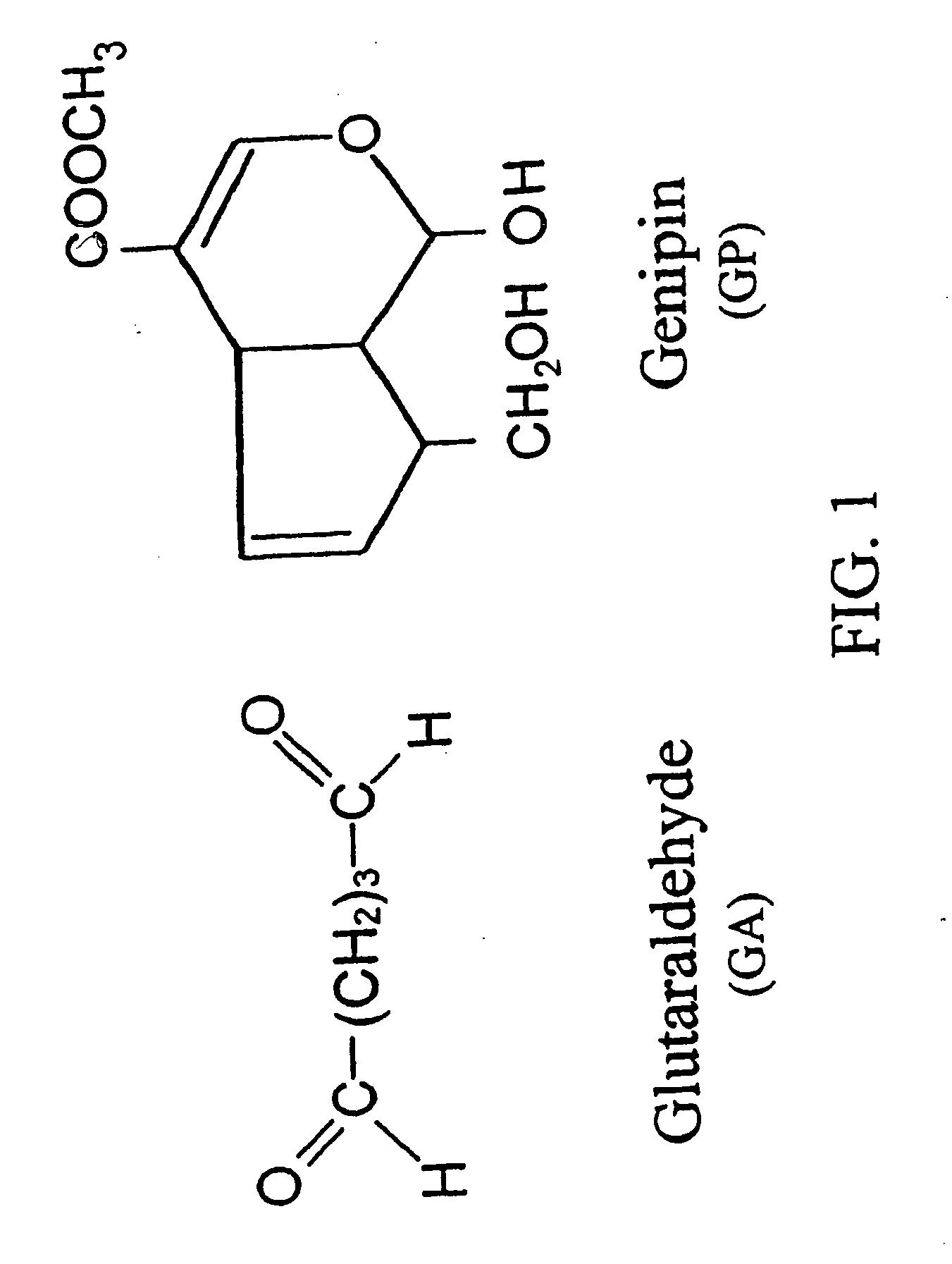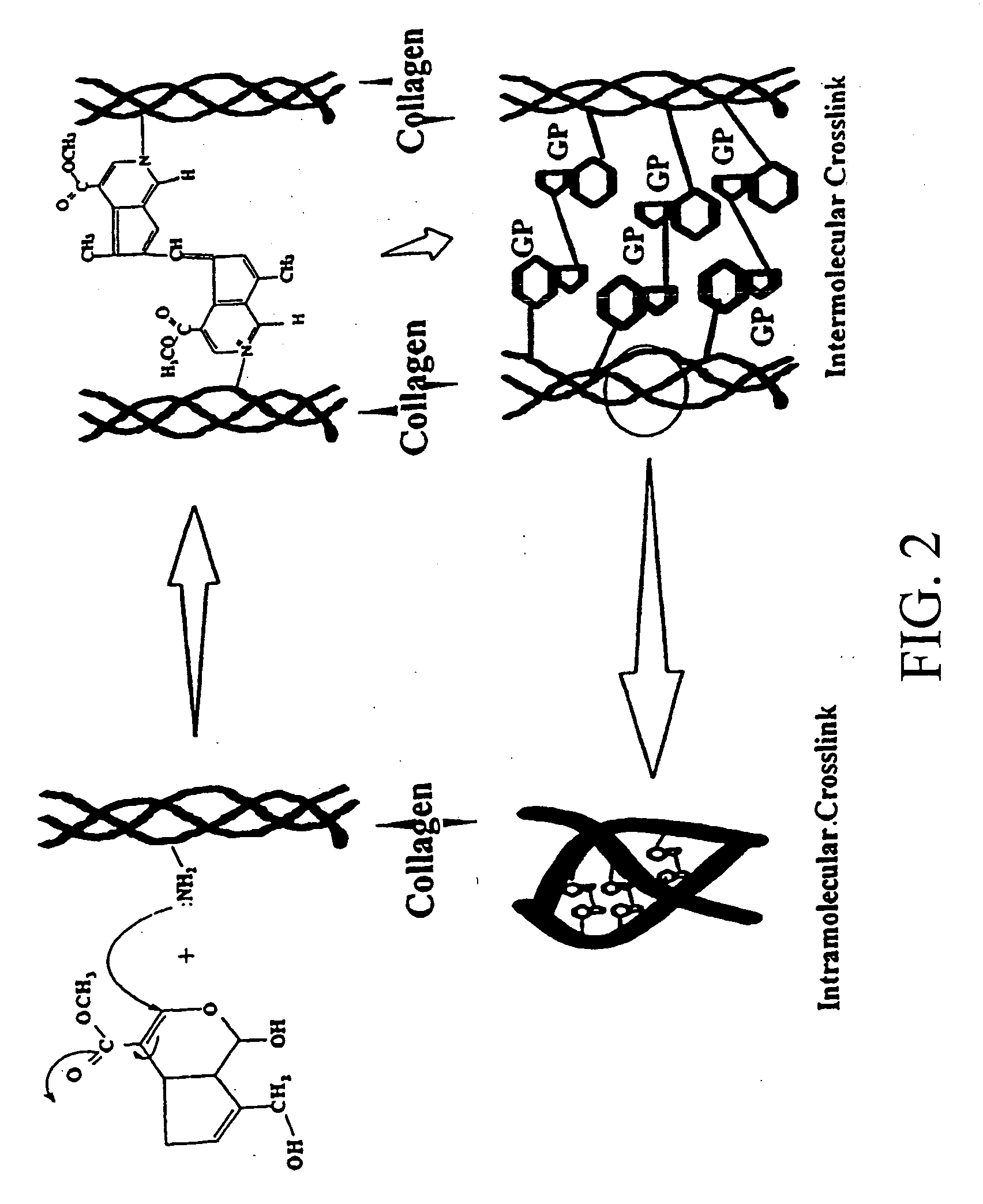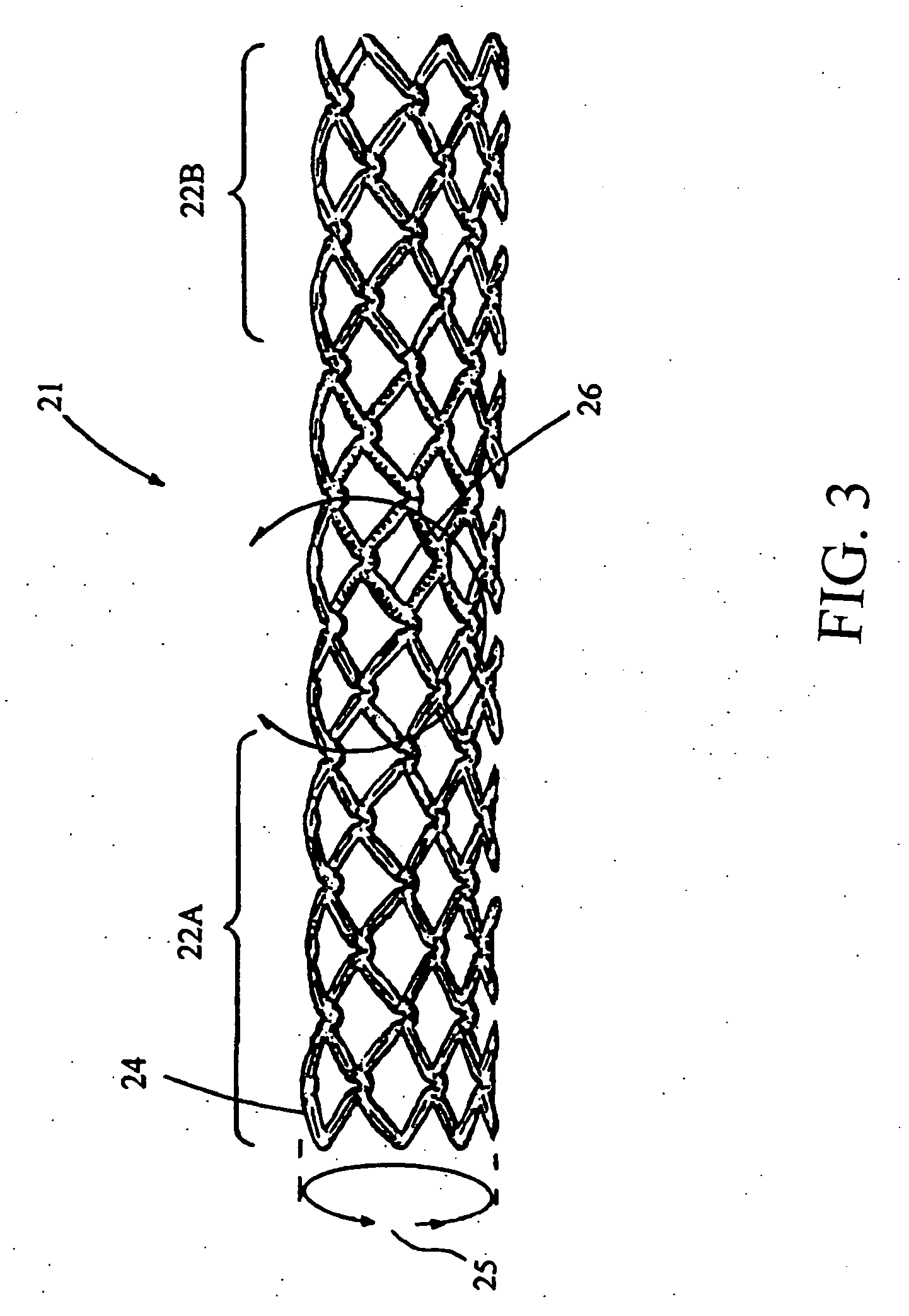Biodegradable occlusive device with moisture memory
a biodegradable, occlusive technology, applied in the direction of prosthesis, surgery, organic active ingredients, etc., can solve the problems of high morbidity and mortality rate, affect the biocompatibility of biological tissue,
- Summary
- Abstract
- Description
- Claims
- Application Information
AI Technical Summary
Benefits of technology
Problems solved by technology
Method used
Image
Examples
example # 3
EXAMPLE #3 EPOXY COMPOUNDS CROSSLINKING
[0098] Following the steps for making solidifiable chitosan solution or other biological solution optionally loaded with a bioactive agent in the previous example, the solution is cast to make a chitosan film pre-product. The film is thereafter cut by a knife to have a strip wrapped on a mandrill in a helical fashion to make a spiral pre-product or a double spiral pre-product. The pre-product is crosslinked with a polyepoxy compound, such as ethylene glycol diglycidyl ether, or a polyepoxy compound containing at least one ether group (such as —O—) shown below.
[0099] The ethylene glycol diglycidyl ether contains two ether groups, wherein the ether group has two branching compounds attached to the —O— that functions as a pivotal center for the branching compounds to relatively free swing about the —O—, enabling the crosslinked device with moisture memory. The device crosslinked with ethylene glycol diglycidyl ether crosslinker exhibits a first ...
example # 4
Example #4
[0101] Add drug in a NOCC solution at room temperature. The NOCC (named after “Nitrogen Oxygen carboxylmethyl chitosan”) is a chitosan derived compound that is pH sensitive and can be used in drug delivery. This NOCC is water soluble at pH 7. Pre-shape and crosslink the NOCC and drug by a crosslinking agent, for example genipin. This is a step of solidification. In one aspect of the present invention, after crosslinking, the shape of the drug containing NOCC can be made harder or permanent. The finished device slowly releases drug when in the body of a patient at a body pH.
[0102] In a separate study, we evaluated genipin-crosslinked chitosan membranes that were fabricated by means of a casting / solvent evaporation technique (Mi F L et al., J Biomater Sci Polymer Edn 2001;12(8):835-850). The crosslinked chitosan film which could be used to make a biodegradable spiral (coil) stent showed ultimate tensile strength values at about 50-55 MPa. The tensile strength of a dog-bone ...
example # 5
EXAMPLE #5
[0103] Taxol (paclitaxel) is practically water insoluble as some other drugs of interest in this disclosure. Therefore, first mechanically disperse paclitaxel in a collagen solution at about 4° C. Load the drug containing collagen onto a stent and subsequently raise the temperature to about 37° C. to solidify collagen fibers on the stent. The loading may comprise spray coating, dip coating, plasma coating, painting or other known techniques. The loading step may repeat a plurality of times. Subsequently, crosslink the coated stent with aqueous genipin or polyepoxy compound. The crosslinking on the drug carrier, collagen or chitosan, substantially modify the drug diffusion or eluting rate depending on the degree of crosslink as correlated to the biodegradation of the crosslinked drug carrier (collagen or chitosan).
PUM
| Property | Measurement | Unit |
|---|---|---|
| pH | aaaaa | aaaaa |
| pH | aaaaa | aaaaa |
| pH | aaaaa | aaaaa |
Abstract
Description
Claims
Application Information
 Login to View More
Login to View More - R&D
- Intellectual Property
- Life Sciences
- Materials
- Tech Scout
- Unparalleled Data Quality
- Higher Quality Content
- 60% Fewer Hallucinations
Browse by: Latest US Patents, China's latest patents, Technical Efficacy Thesaurus, Application Domain, Technology Topic, Popular Technical Reports.
© 2025 PatSnap. All rights reserved.Legal|Privacy policy|Modern Slavery Act Transparency Statement|Sitemap|About US| Contact US: help@patsnap.com



